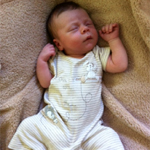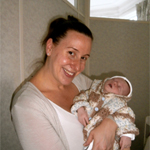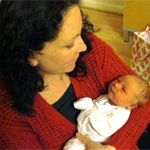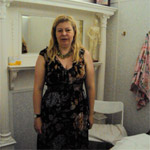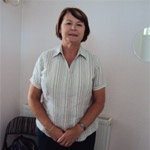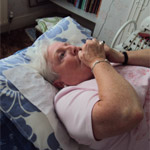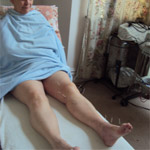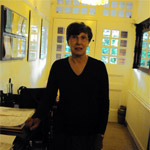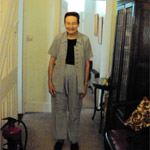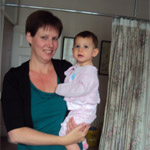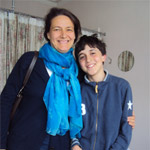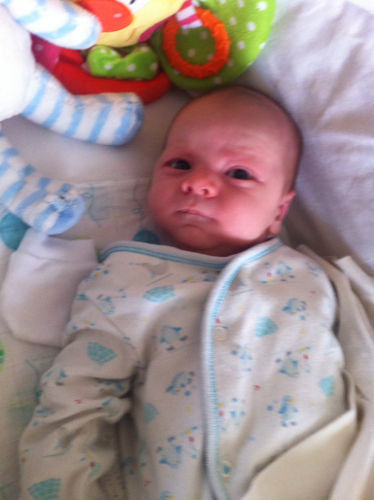FOOT AND ANKLE PAIN
Pain can occur in the foot and ankles for a number of reasons.
The foot and ankle is made up of a number of small bones interconnected by ligaments, muscles and fascia all working together to give the strength, stability and flexibility the foot and ankle needs to function properly.
Common conditions of the foot, ankle and areas which can give rise to pain include:
Acquired flat foot – when the inner side of the foot or inner arch flattens. The foot may roll over to the inner side (known as over-pronation). It is often apparent if the heels of shoes wear out quickly and unevenly. Over-pronation can damage your ankle joint and achilles tendon (the tendon at the back of your ankle) and can also cause shin pain. Symptoms can include, pain, swelling, change in foot shape and knee pain or swelling.
Plantar fasciitis –is pain and inflammation in the plantar fascia – the tough fibrous band of tissue that supports the arches of the foot and runs under the small bones from the underside of the heel and sole towards the toes, Often, people who have plantar fasciitis describe it as a sharp pain, most often under the heel or instep of the foot. It tends to be made worse by standing for long periods of time in poor footwear. Sufferers commonly mention that it is worse when standing after being off their feet for a long time, and it can hurt more putting the foot on the floor first thing in the morning. The sole of the foot can occasionally feel a little numb, tingly or swell slightly. In some cases of plantar fasciitis, a small spur of bone can grow where the plantar fascia attaches and pulls on the heel which can cause a sharp pain.
Achilles pain –The Achilles tendon is formed by the tendon of the two calf muscles, the gastrocnemius and soleus coming together and attaching onto the bone at the back of the heel called the calcaneus) Pain, inflammation or tendonitis in the Achilles can cause pain and tightness in this area.
Sprained ankle. Typically the result of a sudden twisting or “going over” on the ankle joint and more commonly it is the ligaments on the outside of the ankle that are strained. Typical symptoms are swelling, bruising, pain and instability of the ankle. Sometimes an x-ray is required to rule out any fracture. Rest, ice, elevation and compression are often advisable in the first 24 to 48 hours.
How can Denise help with foot and ankle pain?
- Depending on the diagnosis and your age and fitness we can use a variety of electrotherapy, gentle massage and manipulative techniques to reduce pain, inflammation, increase the mobility of the joints and the flexibility of the muscles in the foot.
- If appropriate we may use acupuncture to reduce pain and inflammation.
- We will often look at muscles and joints in the lower limb, the knee, hip and lower back and may treat any joint restrictions and muscle tightness we find there. Often improving the movement in the joints of the lower will help the foot and ankle function better.
- We may offer specific balancing, strengthening or loosening exercises.
- We may offer advice on strapping and brace supports, footwear and any lifestyle factors that might be hindering healing. We may refer you to a podiatrist for their opinion and specialist foot supports.
- X-rays, scans or other tests may be required to make a diagnosis and we may refer you to your GP for any additional investigations and treatment such as advice on pain killers and anti-inflammatory medications.
SHOULDER PROBLEMS
The shoulder is a ball and socket joint with a large range of movement. Such a mobile joint tends to be more susceptible to injury. Shoulder pain can stem from one or more of the following causes:
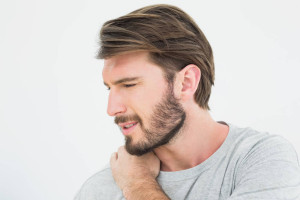 Strains from overexertion
Strains from overexertion- Tendonitis from overuse
- Shoulder joint instability
- Dislocation
- Rotator cuff disorders
- Frozen shoulder
- Pinched nerves (also called radiculopathy)
Systematic reviews considering manipulative therapy as a treatment for shoulder disorders such as the one described found positive results using a combination of treatments:
Manipulative therapy for shoulder pain and disorders: expansion of a systematic review.
Brantingham JW1, Cassa TK, Bonnefin D, Jensen M, Globe G, Hicks M, Korporaal C.
J Manipulative Physiol Ther. 2011 Jun;34(5):314-46. doi:10.1016/j.jmpt.2011.04.002.
This study found a level of B or fair evidence for MMT of the shoulder, shoulder girdle, and/or the FKC combined with multimodal or exercise therapy for rotator cuff injuries/disorders, disease, or dysfunction. There is a fair or B level of evidence for MMT of the shoulder/shoulder girdle and FKC combined with a multimodal treatment approach for shoulder complaints, dysfunction, disorders, and/or pain.
Denise Callaghan uses a multidisciplinary approach combining osteopathy, acupuncture and electrotherapy as described by two of her patients:
“I came to see Denise with a painful soft tissue injury to my right shoulder following some heavy lifting. Treatment has included electrical therapies, massage, acupuncture and stretching and my recovery has been steady, so that now the range of shoulder movement is normal and twinges are rare. Throughout Denise has been patient encouraging and positive and I would (and will) thoroughly recommend her.”
(Gillian Davis retired physiotherapist)
“I am so grateful to Denise Callaghan having had a shoulder problem causing a lot of pain and discomfort. My doctor sent me to physiotherapy, paid for by the N.H.S. I was seen every three weeks and given new exercises each time but this was not beneficial at all – in fact increased my discomfort. After seeing Denise Callaghan, I felt an improvement more or less straight away and now I feel fully recovered without the need for hydrocortisone injections or surgery.”
(Carole Smith)
ALLERGIES
Any substance that triggers an allergic reaction is called an allergen. Some of the most common allergens include:
- grass and tree pollen (hay fever)
- dust mites
- animal dander (tiny flakes of skin or hair)
- food allergy (particularly fruits, shellfish and nuts)
An allergy develops when the body’s immune system reacts to an allergen as though it is a threat, like an infection. It produces antibodies to fight off the allergen, in a reaction called the “immune response”.
The next time a person comes into contact with the allergen, the body “remembers” the previous exposure and produces more of the antibodies. This causes the release of chemicals in the body that lead to an allergic reaction. Symptoms of allergies can include sneezing, wheezing, itchy eyes skin rashes and swelling.
There has been some good evidence to show that acupuncture can help relieve the symptoms. Alison found Acupuncture helped her a great deal.
“I first visited Denise Callaghan, Osteopath and Acupuncturist last September for hay fever and allergies. Since being a small child I have suffered with allergies all year round, and it had reached a stage where I just accepted it, not being aware that something such as acupuncture could help.
After the first session I noticed a difference. Since October I have been on a monthly maintenance programme of one session a month and for the first time ever can breathe properly and am pretty much symptom free.
I would recommend to anyone who suffers from hay-fever or other allergies to visit Denise, I can’t thank her enough.” ALISON WARNER (Evolve and Grow, business coach)
Evidence from systematic reviews suggests that acupuncture and moxibustion may be a safe and effective treatment for allergic rhinitis with benefits over conventional medicine (Xiao 2009), that acupuncture can help to relieve symptoms of perennial rhinitis (Lee 2009) and that acupuncture has a similar efficacy to antihistamines (Zhang 2010). However, the reviews also state that the evidence is mixed and the trials generally of poor quality and that more high-quality randomised controlled trials are needed to assess the effectiveness of acupuncture for allergic rhinitis, particularly seasonal (hay fever). (Roberts 2008; Lee 2009; Xiao 2009; Zhang 2010). Recent randomised controlled trials have found that acupuncture used as an adjunct to routine care for allergic rhinitis has clinically relevant and persistent benefits (Brinkhaus 2008) and is cost effective (Witt 2009). Such trials have also found that acupuncture is effective in the symptomatic treatment of perennial rhinitis (Xue 2007) and that active acupuncture is more effective than sham acupuncture in decreasing the symptom scores for persistent allergic rhinitis and increasing the symptom-free days (Ng 2004). (See Table below)
In general, acupuncture is believed to stimulate the nervous system and cause the release of neurochemical messenger molecules. The resulting biochemical changes influence the body’s homeostatic mechanisms, thus promoting physical and emotional well-being. Stimulation of certain acupuncture points has been shown to affect areas of the brain that are known to reduce sensitivity to pain and stress (Hui 2010)
Acupuncture may help to relieve pain and congestion in people with allergic rhinitis by:
- regulating levels of IgE and cytokines, mediators of the allergic reaction to extrinsic allergens (Ng 2004; Rao 2006; Roberts 2008)
- stimulating nerves located in muscles and other tissues, which leads to release of endorphins and other neurohumoral factors, and changes the processing of pain in the brain and spinal cord (Pomeranz, 1987; Han 2004; Zhao 2008; Cheng 2009);
- reducing inflammation, by promoting release of vascular and immunomodulatory factors (Zijlstra 2003; Kavoussi 2007);
- enhancing natural killer cell activities and modulating the number and ratio of immune cell types (Kawakita 2008);
- increasing local microcirculation (Komori 2009), which aids dispersal of swelling.
References
Blaiss MS. Quality of life in allergic rhinitis. Ann Allergy Asthma Immunol 1999; 83: 449-454.
Lund VJ, Aaronsen D, Bousquet J, et al. International consensus report on the diagnosis and management of rhinitis. Allergy 1994; 49: 1-34.
Parikh A, Scadding GK. Seasonal allergic rhinitis.BMJ 1997; 314: 1392.
Ross AM, Fleming DM. Incidence of allergic rhinitis in general practice, 1981-92. BMJ 1994; 308: 897-900.
JAW PAIN [T.M.D.]
Temporomandibular disorder (TMD) is a condition affecting the joints and muscles involved with chewing.
Doctors sometimes refer to the condition as “myofascial pain disorder”. It’s been estimated that up to 30% of adults will experience TMD at some point in their lives.
TMD can cause:
- clicking, popping or grating noises as you chew or move your mouth
- muscle pain around the jaw
- pain in front of the ear that may spread to the cheek, ear and temple
- difficulty opening the mouth – the jaw may feel tight, as if it is stuck, making eating difficult
- headache or migraine
- earache or “buzzing” or blocked sensation in the ear
- pain in other areas of the body – such as neck ache or back ache
These symptoms may lead to related symptoms, such as disturbed sleep.
Possible causes of TMD include:
- clenching your jaw or clenching your teeth when you sleep (bruxism) – which overworks the jaw muscles and puts pressure on the joint (often caused by stress)
- wear and tear of the inside of the jaw joint – usually caused by osteoarthritis
- injury to the jaw joint – for example, after a blow to the face or surgery
- stress– some people may inherit increased sensitivity to pain or stress
- uneven bite– for example, when new fillings, dental crowns or dentures are fitted
- specific diseases– TMD may be associated with specific diseases such as rheumatoid arthritis, gout or fibromyalgia.
However, some people may develop TMD without an obvious cause being found.
Lifestyle changes
There are a number of self-help measures that can help improve TMD, including:
- resting the joint by eating soft food and avoiding chewing gum
- holding a warm or cold flannel to the jaw for 10-20 minutes, several times a day
- doing a few gentle jaw-stretching exercises – your healthcare professional can recommend appropriate exercises
- avoiding opening the joint too wide until the pain settles
- avoiding clenching the teeth for long periods of time
To find out how Denise could help you
Here is the experience of one of my patients:
I came to Denise in desperation after suffering with chronic ear, jaw and face pain for several months. My G.P. had referred me to a consultant who couldn’t find any physical cause for the pain and eventually said ‘we are running out of options’. A few people suggested I try acupuncture and so I thought I would give it a go.
Denise listened to my symptoms and with a mixture of facial massage and acupuncture I noticed an immediate improvement in the level of pain. It took a few sessions for the pain to go completely but given I had been in a lot of pain for a long time this was understandable.
After a particularly stressful period at work a few weeks ago the pain reoccurred and I saw Denise again. This time the pain seemed to drag in my lower jaw and neck but again with massage in the neck, some manipulation and acupuncture I gained very quick and lasting relief. I thoroughly recommend Denise because as an osteopath and acupuncturist she can combine treatments to deal with exactly what is bothering you. The acupuncture does not hurt and it is very relaxing to lay on the treatment bed for half an hour or so.
Beverly Rowland, [programme manager}
Bruxism
If you wake up with a tight jaw or headache over the temples then it could be bruxism. It’s a habit affecting 20% of the population, characterised by grinding or clenching of the teeth causing breakages, painful or limited movement of the jaw and headaches. Primary bruxism occurs when there is no apparent medical condition, but is common during stressful periods.



